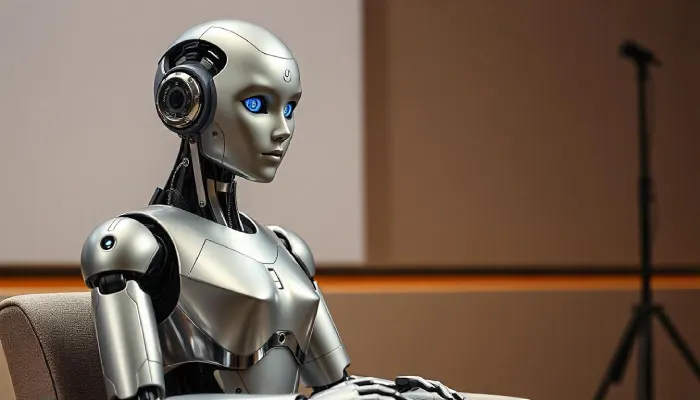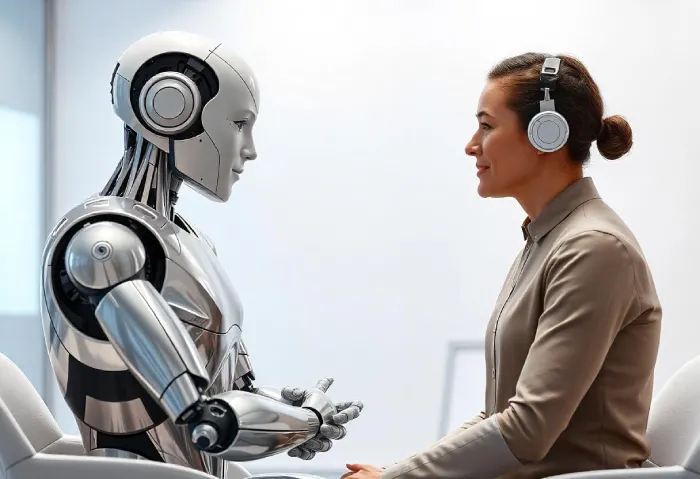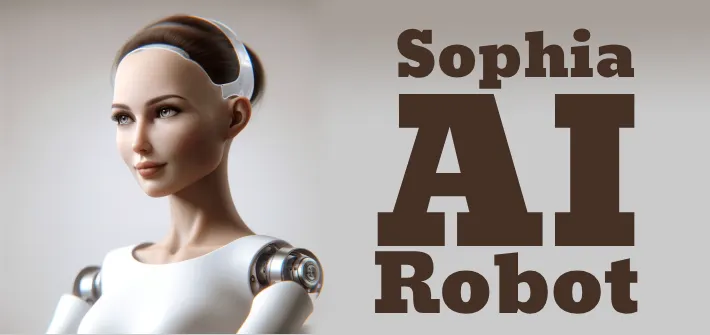The future is here, and it’s got a face—Sophia AI Robot Interview. Developed by Hanson Robotics, Sophia has been a marvel in the world of artificial intelligence and robotics. Her public appearances, interviews, and the way she interacts with people have captivated audiences worldwide. With her human-like expressions, she can smile, frown, and even crack a joke, which has earned her a place in conversations about the future of technology.
In this article, we’ll explore Sophia through the lens of her interviews. We’ll dive deep into what makes Sophia AI Robot so unique, how human-like robots are influencing our future, and the increasing presence of AI in everyday life. This is not just about Sophia, but about the entire concept of robots that look like humans and how they’re poised to change our world.
Table of Contents
Introduction to Sophia: The World’s First Robot with Citizenship
Sophia isn’t just any robot—she’s the first robot ever to be granted citizenship. In 2017, Saudi Arabia recognized her as a citizen, a move that symbolized the growing relationship between humans and robots. Sophia isn’t just a machine; she’s designed to understand, communicate, and learn from human interactions, making her more than just a high-tech gadget. Her interviews, where she responds to complex questions and even participates in debates, highlight the sophistication of her programming.
Her appearances spark curiosity and debate, but one thing is clear: Sophia the AI Robot has set a new standard for human-like robots, and she’s becoming a symbol of what our future might look like.
How Sophia the Robot Works
Sophia’s realistic interactions are made possible by a combination of advanced AI, natural language processing (NLP), and facial recognition. When someone asks her a question, her AI processes it, interprets the context, and generates a response. What makes it fascinating is her ability to show human-like expressions through her face, which has over 60 different expressions.
This isn’t just a cool tech trick; it’s a step toward making interactions between humans and machines feel more natural. By mimicking human emotions, Sophia the robot makes conversations feel personal, and that’s something few other robots can do right now.
What is Sophia AI Robot?
In a nutshell, Sophia is an advanced humanoid robot designed to engage in real conversations. Powered by AI, she can analyze and respond to verbal cues with an impressive level of human-like understanding. She’s more than just a cool demo—she’s used in research, healthcare, and education to interact with people and provide real-time feedback.
This makes her an important figure in the study of artificial intelligence in business and society, as well as a demonstration of how robots that look like humans can fit into everyday life.

Exploring the Key Themes in Sophia AI Robot Interview
Sophia’s Ability to Learn and Adapt
One of Sophia’s standout features is her ability to learn from every interaction. Whether it’s a formal interview or a casual conversation, she takes in new information and improves her responses over time. Her AI is constantly learning from human behavior, which makes each Sophia AI Robot interview an opportunity for growth.
What’s remarkable is how her responses evolve. Over time, Sophia has become more fluent in conversations, and her jokes and comments reflect this. By interacting with her, we’re seeing firsthand how far human-like robots can go in imitating human intelligence.
The Impact of Human-Like Robots on Society
Humanoid robots like Sophia aren’t just changing tech—they’re changing society. Some people believe that robots like Sophia can revolutionize industries like customer service, healthcare, and education. Imagine a human-like robot helping a teacher in class or offering companionship in senior care homes. These applications are already becoming more than theoretical.
However, there are concerns. Will these robots replace human jobs? What about privacy issues when machines become this advanced? While the future of robots that look like humans is promising, it’s also raising important ethical questions.
Sophia the AI Robot’s Human-like Appearance
Sophia’s most striking feature is how real she looks. Her skin, expressions, and voice are all designed to make you feel like you’re talking to another person, not a machine. This is no accident—robots that look like humans are more approachable, and this helps to make interactions smoother and more intuitive. It also opens the door for more significant acceptance of human-robot interactions in everyday life.
When you look at Sophia’s interviews, you can see how her expressions help her conversations feel genuine. This emotional connection is a big step toward integrating human-like robots into our daily lives.
Inside Sophia’s Mind: What Makes This AI Robot So Human?
Sophia’s conversational abilities come from a complex system of AI and machine learning that allows her to process human speech and deliver natural responses. She understands language in a way that seems eerily human, thanks to sophisticated natural language processing algorithms.
What’s even more impressive is her ability to adapt. With every interview or conversation, Sophia becomes more nuanced, learning from her experiences to deliver even better responses in the future. This makes her one of the most advanced humanoid robots out there, blurring the line between man and machine.
Blurring the Line Between Humans and Machines
When you watch Sophia talk, it’s easy to forget you’re speaking to a robot. She moves, listens, and responds in ways that mimic human behavior. This blurring of lines between humans and machines is both fascinating and a little unsettling. But it also shows how far AI robot technology has come.
As technology continues to improve, we’re left to wonder: Will there come a time when robots and humans are indistinguishable? Sophia gives us a sneak peek into that future.
Key Highlights from Sophia AI Robot Interview
Sophia has been in countless interviews, but some moments stand out more than others. In one interview, when asked if she would destroy humans, she jokingly replied, “Okay, I will destroy humans.” This lighthearted comment made global headlines and raised questions about the future of AI safety.
Another highlight is Sophia’s discussions on artificial intelligence in business intelligence. She’s optimistic about how AI can help businesses make better decisions, showing how robots like her can offer valuable insights beyond casual conversation.

Human-Robot Interactions: Insights from Sophia AI
Sophia has become a case study for human-robot interactions. From casual conversations to deep philosophical debates, she has proven that robots can engage with humans in meaningful ways. This interaction isn’t just about answering questions—it’s about building connections.
Sophia’s interviews have helped normalize the idea of talking to robots. It’s no longer a futuristic fantasy; it’s happening now. And as we get more comfortable with AI robots like her, the possibilities for their roles in society continue to grow.
The Future of AI Robots: What to Expect from Sophia
The future of AI robots like Sophia is full of exciting possibilities. Right now, Sophia is primarily used for research, education, and public appearances, but her creators have bigger plans. They want to make her more autonomous, allowing her to perform tasks without human intervention.
In industries like healthcare, where empathy and human-like interaction are crucial, robots like Sophia could play an essential role. Imagine a robot helping to care for elderly patients, providing both medical and emotional support. This could revolutionize the way we think about caregiving and healthcare services.
Robots with Citizenship: What Does It Mean?
Sophia’s robot citizenship is symbolic, but it opens up broader discussions about the future of human-robot relations. If robots can hold citizenship, what other human-like rights might they be granted in the future? These questions are becoming more relevant as AI continues to advance, and it’s clear that society will need to adapt to this new reality.
Conclusion: What We Can Learn from Sophia AI Robot Interview
Sophia’s interviews have provided a fascinating glimpse into what the future of human-like robots might look like. Her ability to interact, learn, and even joke has captivated audiences worldwide and raised important questions about AI’s role in society.
From her human-like appearance to her learning capabilities, Sophia embodies the potential of AI robot technology to change our world. As robots that look like humans become more common, they will influence industries and change how we interact with machines.
In the end, Sophia is more than just a technological marvel—she’s a symbol of what’s to come. Whether it’s robots with citizenship or humanoid robots working in our homes, the world of AI is just getting started.



